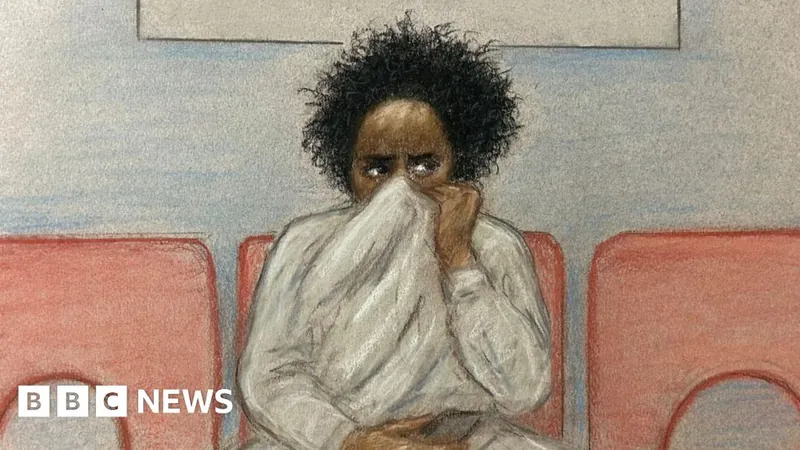
The Shocking Case of Axel Rudakubana: How Did Authorities Fail in Preventing a Tragedy?
2025-01-22
Author: Ming
In a chilling narrative that has left many asking how such violence could have been prevented, Axel Rudakubana’s descent into murder was marked by numerous red flags that multiple agencies failed to act upon. Despite being known to local police and anti-extremism organizations well before he brutally murdered three young girls, the interventions that could have changed his trajectory toward violence were alarmingly limited. Prime Minister Sir Keir Starmer has condemned these failures, stating that the state has let society down.
Early Warning Signs Ignored
Rudakubana’s troubling behavior began manifesting during his early teenage years. At just 11, he had appeared in a BBC campaign video, yet by the time he was in year nine, he was already exhibiting severe anger management issues and a fascination with historical figures known for their brutality, including Hitler and Genghis Khan. His violent tendencies escalated when he brought a knife to Range High School in Merseyside, claiming to have endured racist bullying. Although he did not use the weapon in that incident, he was expelled from the school and soon engaged in further acts of violence, such as attacking a fellow student with a hockey stick.
Post-expulsion, Rudakubana slipped through the cracks of the education system. Diagnosed with autism spectrum disorder, he was enrolled in two special educational institutions. However, his attendance was poor, and his mental health deteriorated exacerbated by the pandemic. The Lancashire Child Safeguarding Partnership noted that his lack of reintegration into education only worsened his situation.
Alarming Patterns of Behavior
Between October 2019 and May 2022, Rudakubana was involved in multiple incidents that brought him to law enforcement's attention. He had assault convictions and was referred to youth justice services. His interactions with local authorities continued, but a lack of adequate responses from Children's Social Care and mental health services underscored the systemic failures at play. Despite professionals' best efforts, his civil engagement remained persistently low.
Dark Obsessions and Delusions
The dangers presented by Rudakubana escalated further as he became entangled in extremist ideologies. He drew interest from the government's anti-extremism unit, Prevent, due to his fixations on mass violence and terrorism events, including school shootings and attacks carried out by terrorist groups. Referred to Prevent multiple times, the severity of his intentions was never fully acknowledged, leaving him open to act without scrutiny.
In the wake of the July 29, 2024, attack, the extent of Rudakubana's dark obsessions came to light. Police uncovered a disturbing array of violent materials stored on his digital devices, including research related to war and genocide. These findings illustrated not only an alarming interest in violence but also a resolve to act on those twisted thoughts.
The Event That Shook a Community
On what was meant to be a joyful day for children, Rudakubana left his home masked and armed with a knife purchased via Amazon. He targeted the attendees of a Taylor Swift-themed dance workshop at a local studio, killing six-year-old Bebe King, seven-year-old Elsie Dot Stancombe, and nine-year-old Alice da Silva Aguiar while injuring several others. His quick apprehension by the police did little to quell the horror of the injuries he inflicted within mere minutes.
In the aftermath, investigators found a troubling cache at Rudakubana’s home, including weapons and a box containing ricin, a highly toxic substance. Despite no evidence that he had previously attempted to utilize these items, it raised serious questions regarding how he had been able to accumulate such dangerous materials without intervention.
Missed Opportunities and Ongoing Review
The horrifying behavior leading up to the attack prompts agonizing questions about the systemic failures that allowed Rudakubana to slip through various safety nets. Evidence suggests that he should have been placed under enhanced monitoring, especially given his repeated referrals to the Prevent program. The inquiry has raised significant concerns regarding how authorities categorize potential threats and their effectiveness in addressing youths like Rudakubana, who may not fit conventional profiles of extremism.
As Rudakubana awaits sentencing, the broader implications of his actions continue haunting the community and spurring debates about the need for a more proactive and nuanced understanding of the threats posed by individuals with complex psychological profiles. The government's ongoing review of the Prevent program is critical in ensuring that future tragedies are averted.
The haunting question remains: could this tragedy have been prevented?





 Brasil (PT)
Brasil (PT)
 Canada (EN)
Canada (EN)
 Chile (ES)
Chile (ES)
 Česko (CS)
Česko (CS)
 대한민국 (KO)
대한민국 (KO)
 España (ES)
España (ES)
 France (FR)
France (FR)
 Hong Kong (EN)
Hong Kong (EN)
 Italia (IT)
Italia (IT)
 日本 (JA)
日本 (JA)
 Magyarország (HU)
Magyarország (HU)
 Norge (NO)
Norge (NO)
 Polska (PL)
Polska (PL)
 Schweiz (DE)
Schweiz (DE)
 Singapore (EN)
Singapore (EN)
 Sverige (SV)
Sverige (SV)
 Suomi (FI)
Suomi (FI)
 Türkiye (TR)
Türkiye (TR)
 الإمارات العربية المتحدة (AR)
الإمارات العربية المتحدة (AR)